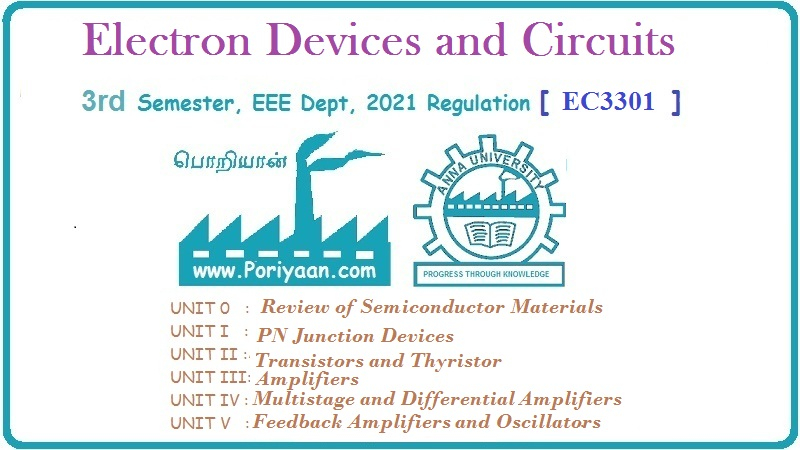Electron Devices and Circuits: Unit II: (a) Bipolar Junction Transistors (BJT)
Transistors, Types and Advantages of BJT
• Transistor is a three terminal device : Base, emitter and collector, can be operated in three configurations common base, common emitter and common collector.
Introduction
•
Transistor is a three terminal device : Base, emitter and collector, can be
operated in three configurations common base, common emitter and common
collector.
•
According to configuration it can be used for voltage as well as current
amplification.
•
The amplification in the transistor is achieved by passing input current signal
from a region of low resistance to a region of high resistance. This concept of
transfer of resistance has given the name TRANSfer-resISTOR (TRANSISTOR).
Types
of Transistors
•
There are two types of transistors : Unipolar junction transistor and bipolar
junction transistor.
•
In unipolar transistor, the current conduction is only due to one type of
charge carriers, majority carriers.
•
The current conduction in bipolar transistor is because of both the types of
charge carriers, holes and electrons. Hence this is called Bipolar Junction
Transistor, hereafter referred to as BJT.
•
In BJT output current is controlled by input current and hence it is a current
controlled device.
Types
of BJT
1.
n-p-n type 2. p-n-p type
Advantages
of BJT
1.
Low operating voltage
2.
Higher efficiency
3.
Small size and ruggedness and
4.
Does not require any filament power
Review Questions
1. What is transistor ?
2. Explain the word transistor.
3. What are the types of transistors ?
4. What are the types of BJT ?
5. State the advantages of a transistor.
Electron Devices and Circuits: Unit II: (a) Bipolar Junction Transistors (BJT) : Tag: : - Transistors, Types and Advantages of BJT
Related Topics
Related Subjects
Electron Devices and Circuits
EC3301 3rd Semester EEE Dept | 2021 Regulation | 3rd Semester EEE Dept 2021 Regulation
